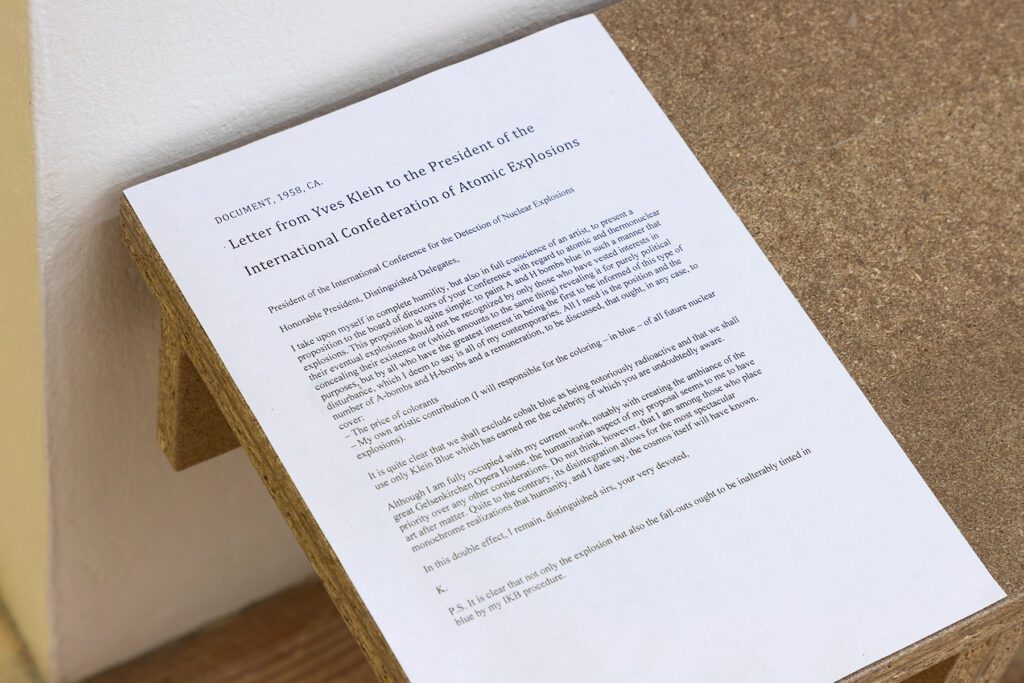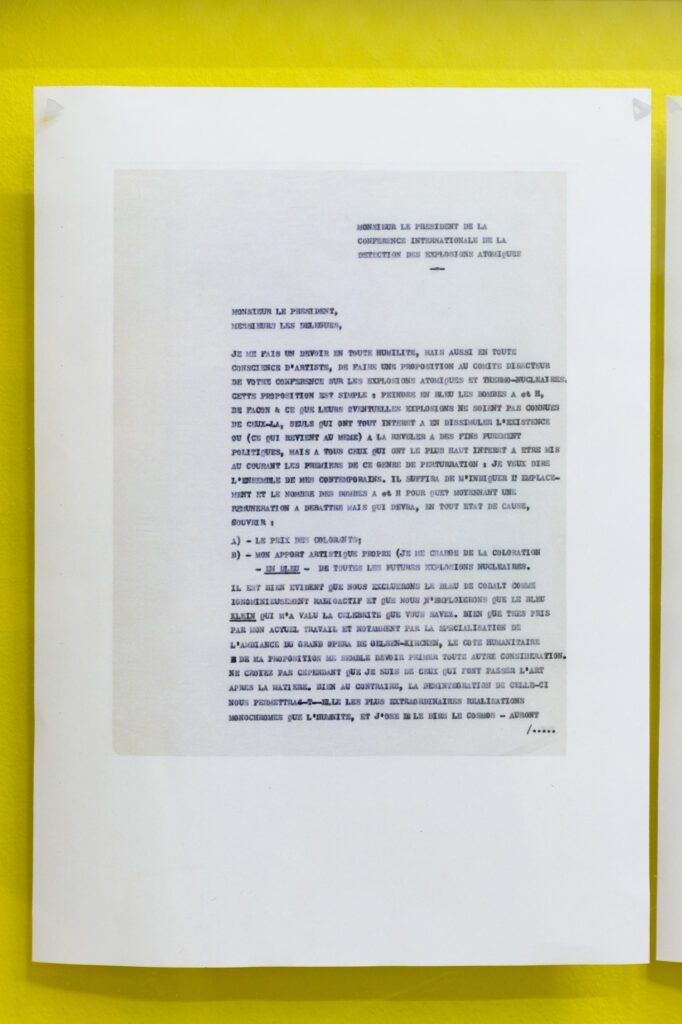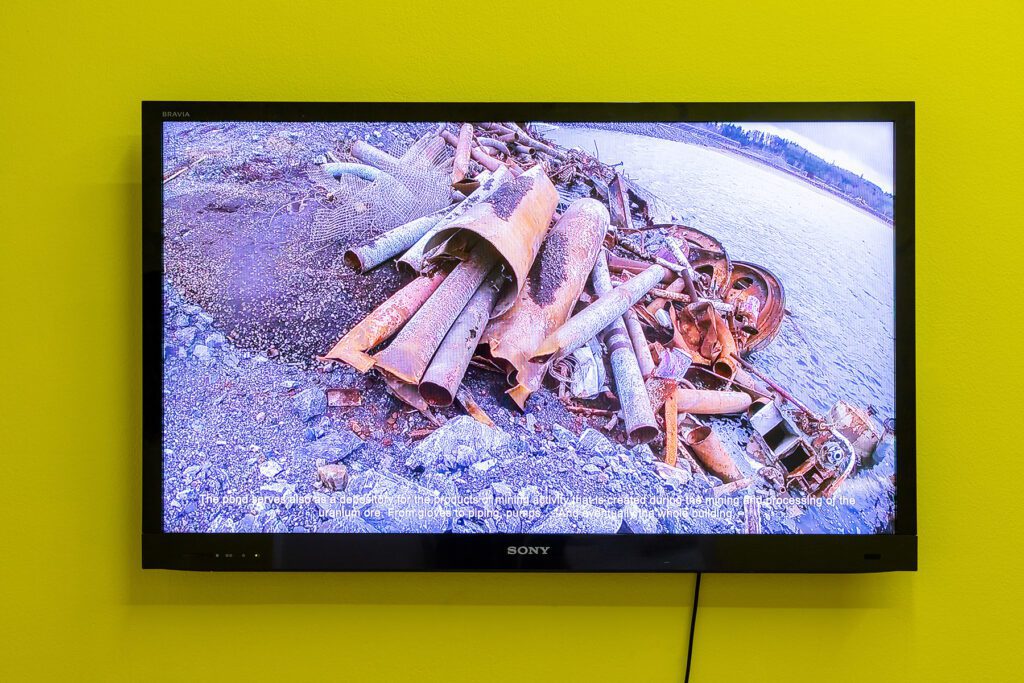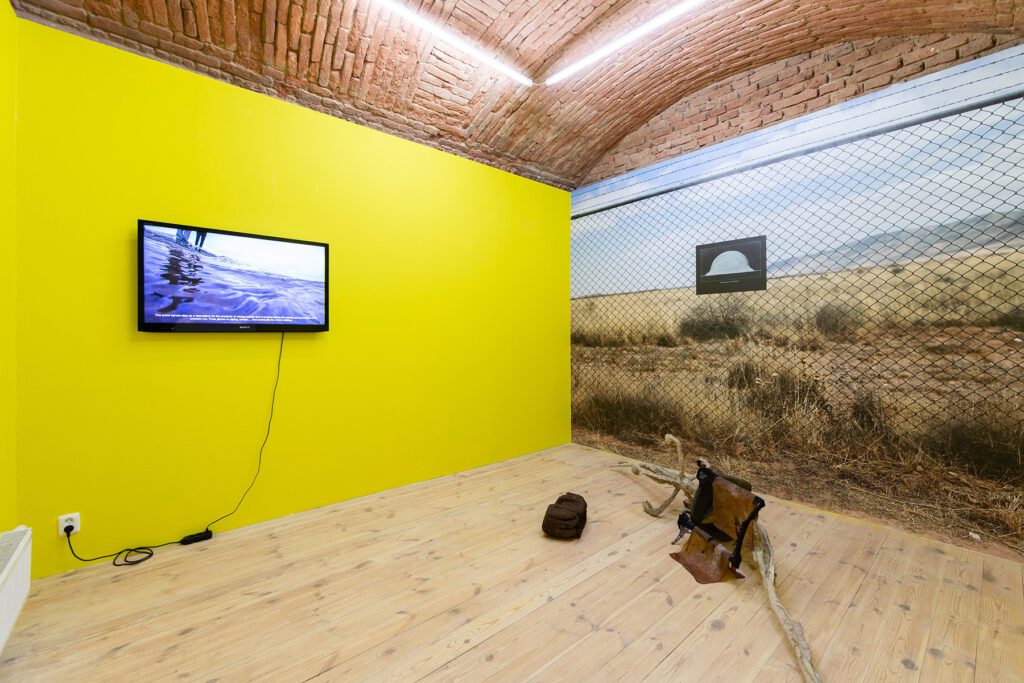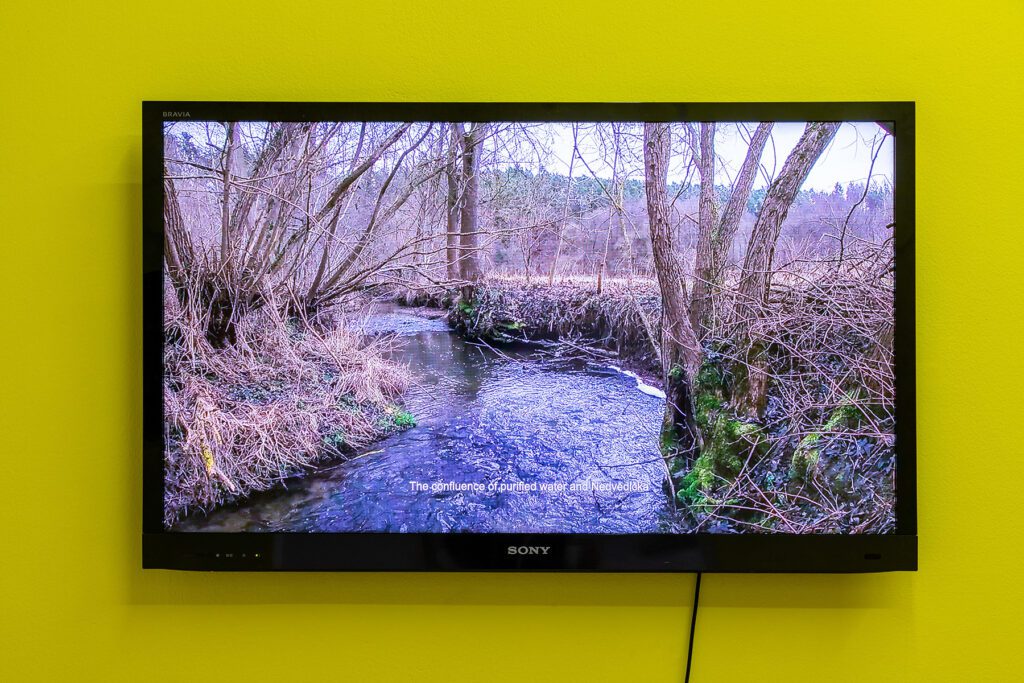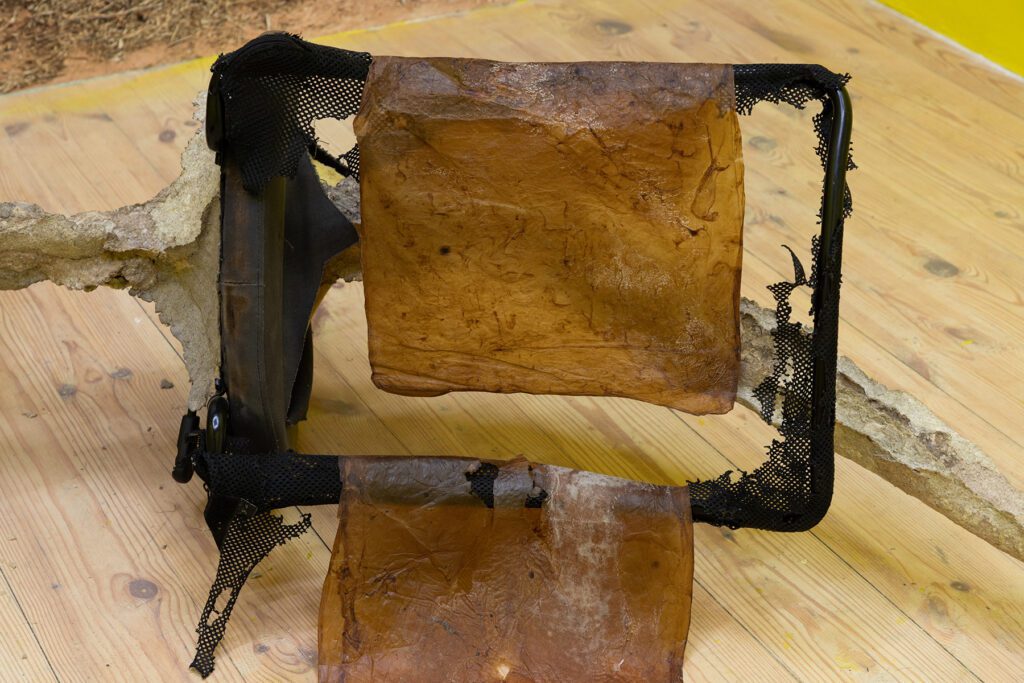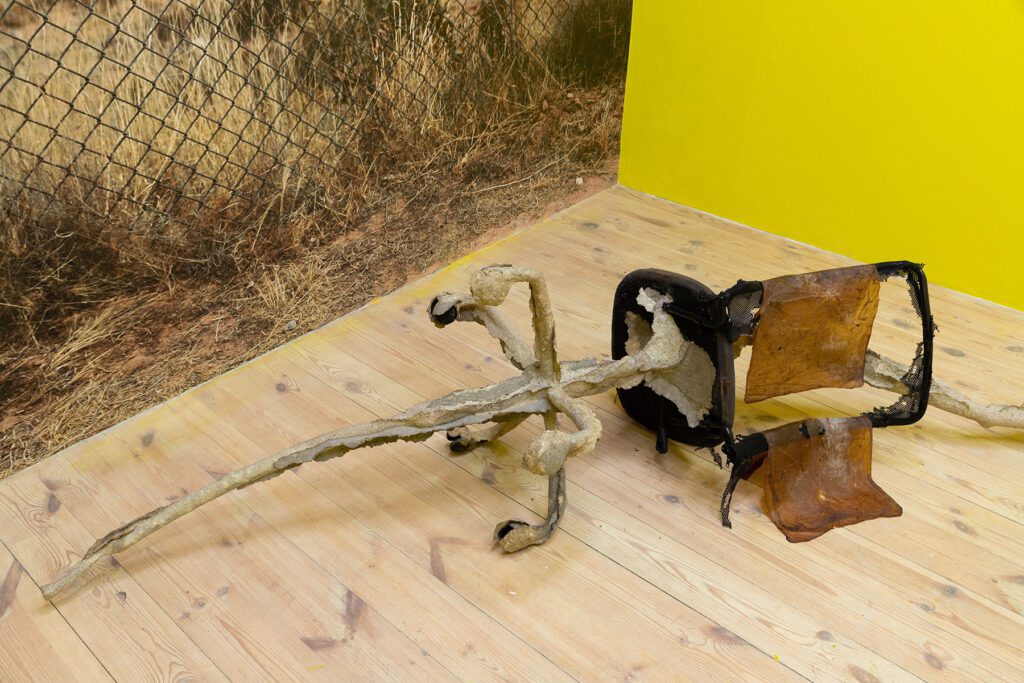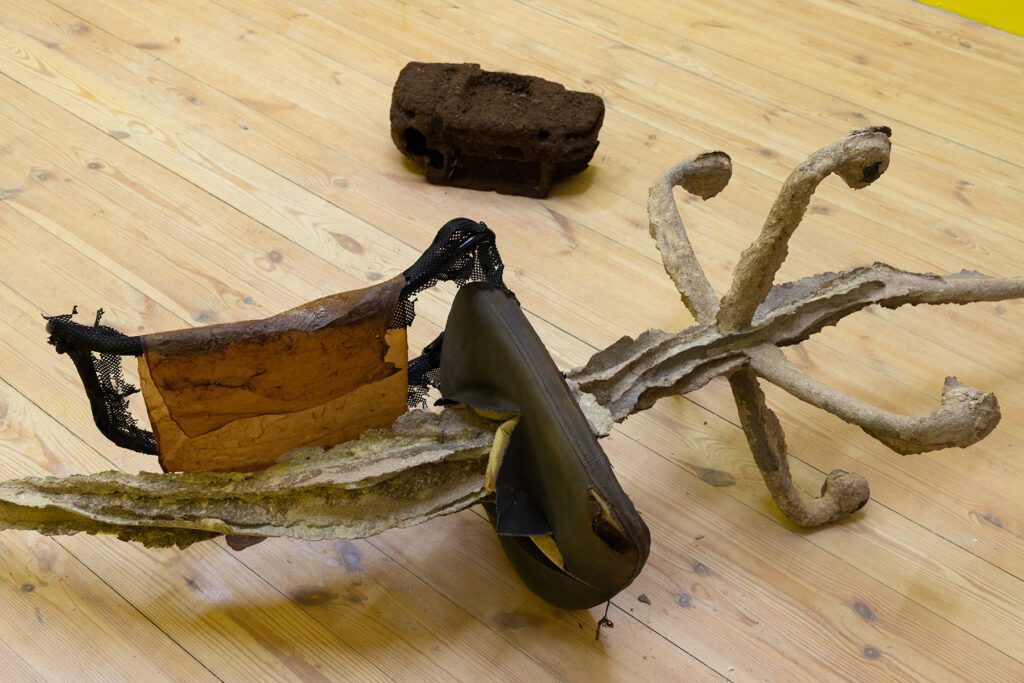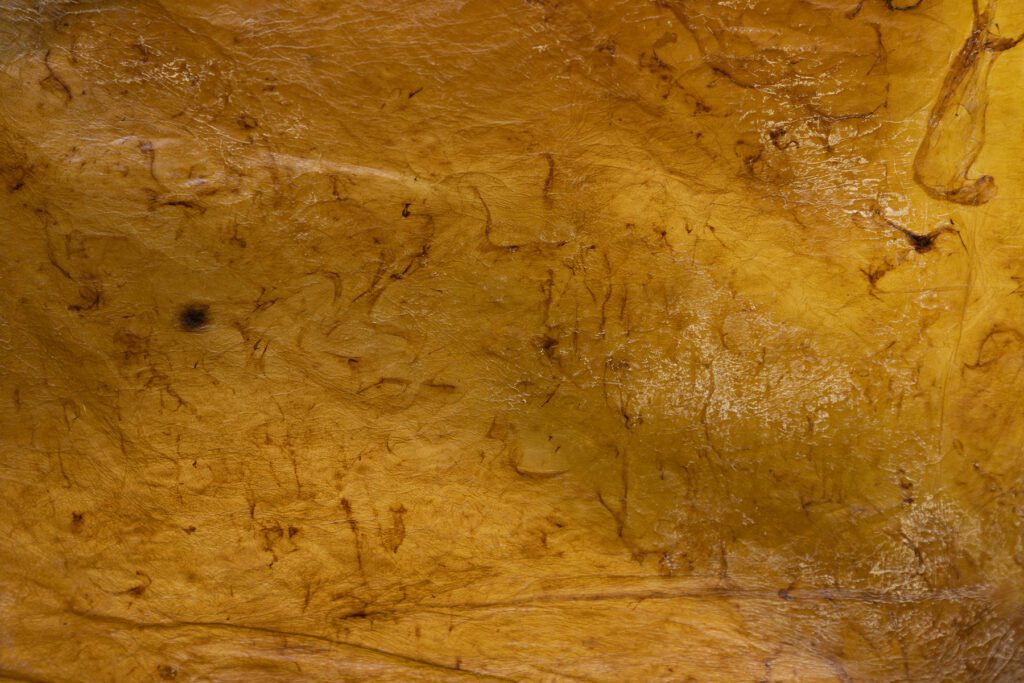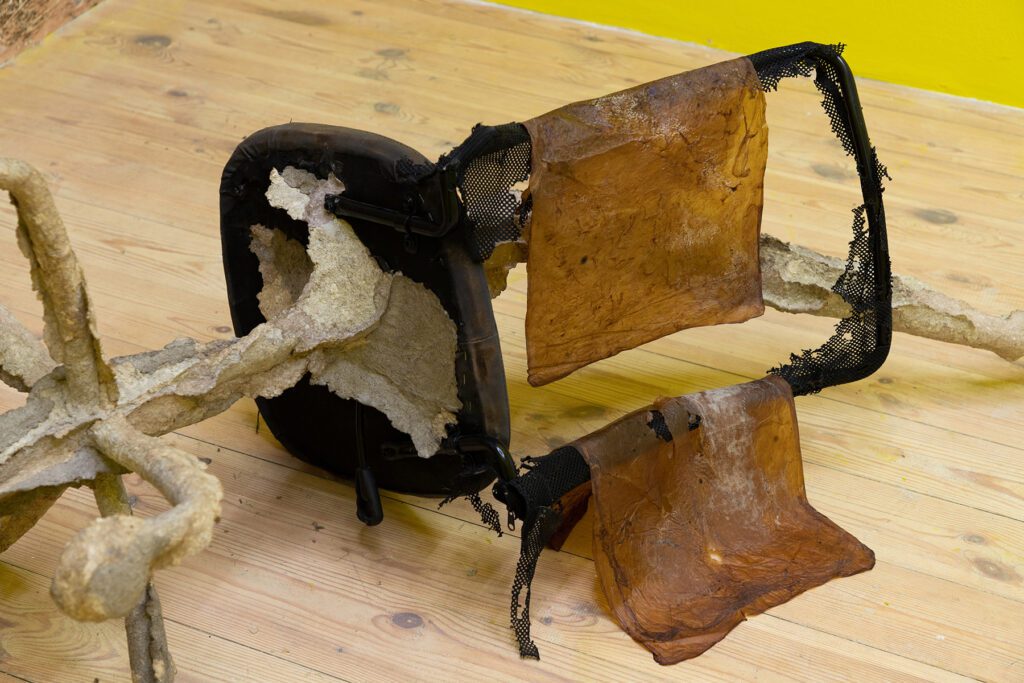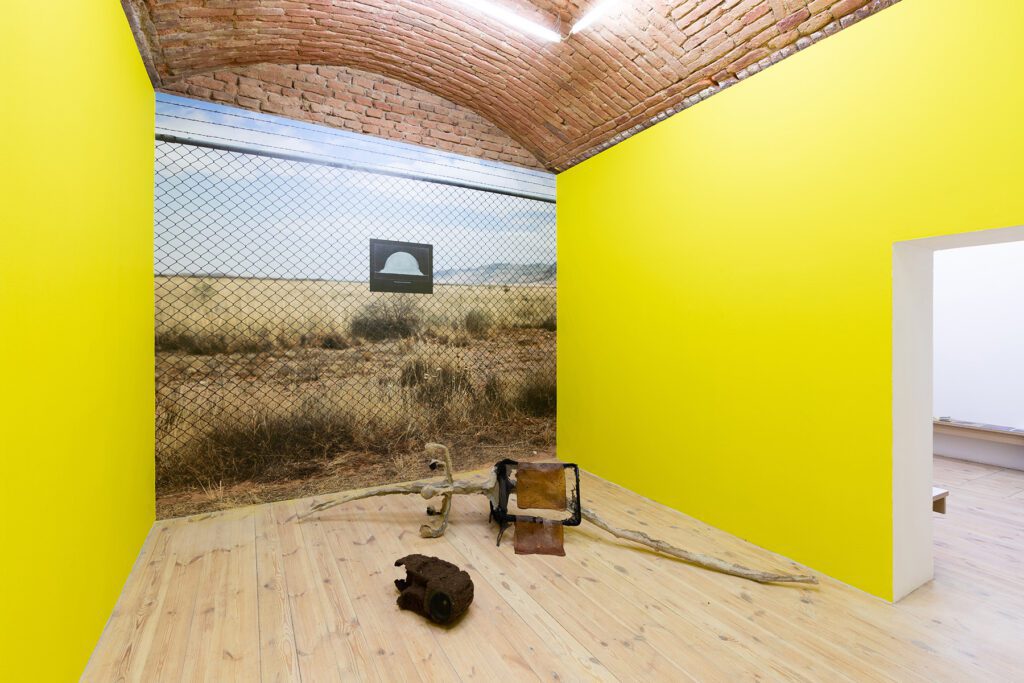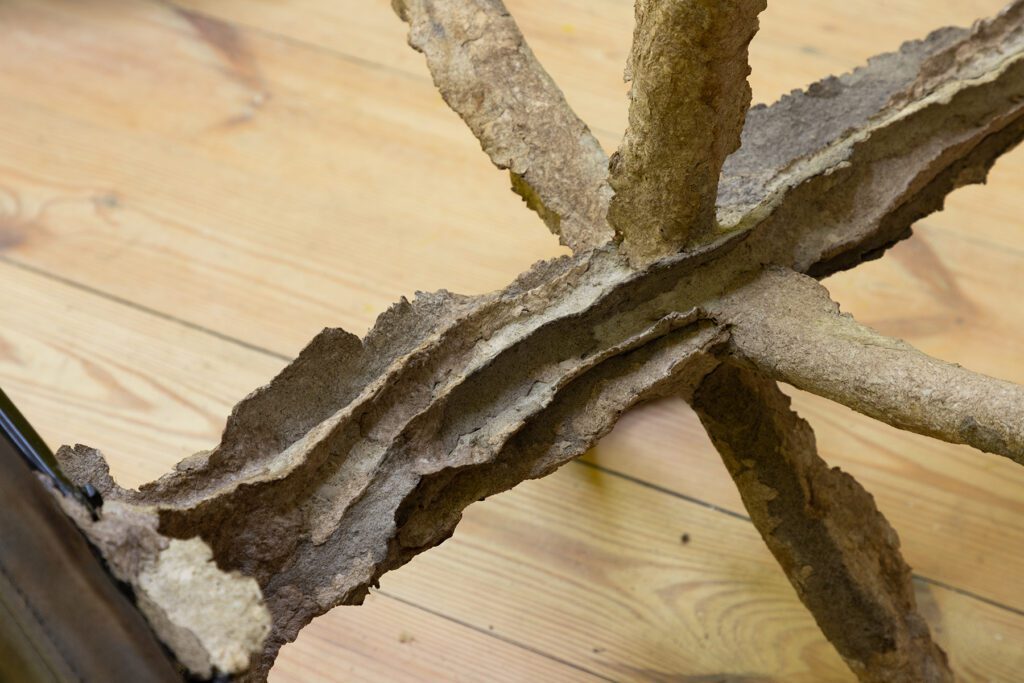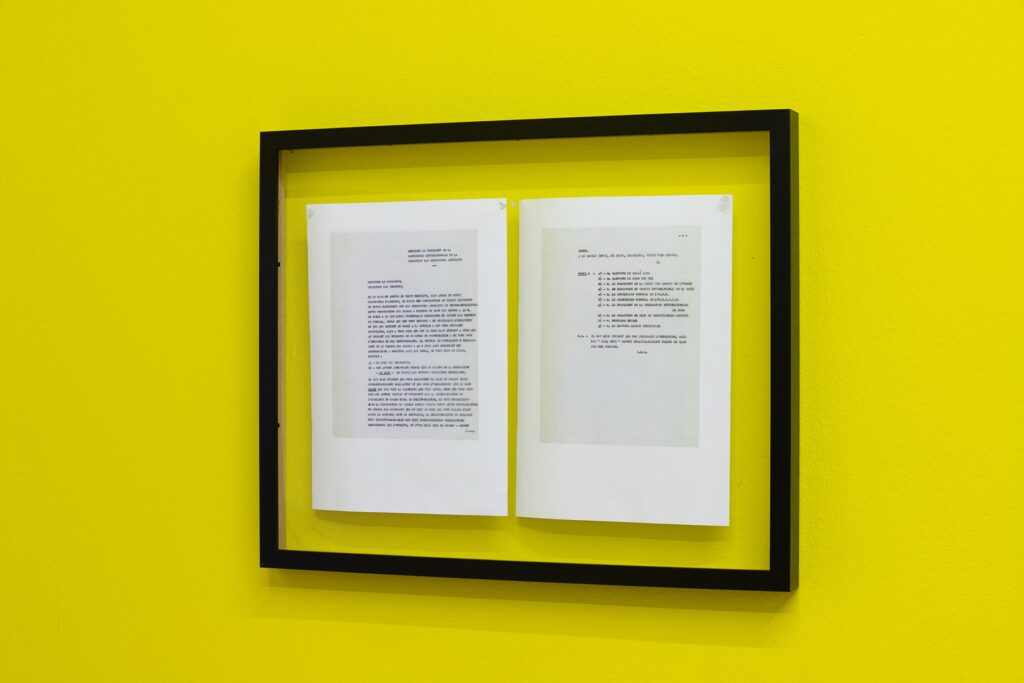29. 06. 2023 – 30. 07. 2023, opening 28. 06. 2023 7pm
The latest exhibition, Bleus Explosions, closes the chapter of Nuclear Culture at 35M2 Gallery. The last section explores the theme of nuclear waste and concludes with the theme of a toxic future not only in terms of the impact of radiation. The title is inspired by the French artist Yves Klein and his 1958 letter to the president of the International Confederation of Atomic Explosions. In it, he responds to the testing of atomic bombs not only over Nevada, and in it he himself suggests to the Confederation to blue with its famous ultramarine blue called IKB the places where the testing took place. The artist’s main point was to create a kind of map to show where the atomic bombs landed, so that their location would be recorded – it was also a political act to show that there weren’t exactly a few of them.
The symbol of the 20th century was generally the explosions – as Yves Klein himself demonstrates with his famous IKB. For the 21st century, the symbol is already different – experiencing and coexisting with radiation – whether from the perspective of harming oneself (humans, animals, the Earth), especially in terms of poisons and toxic contamination (the post-Fukushima complex), or from the perspective of the art of the nuclear Anthropocene, which is currently still playing a high game through nuclear energy (war and weapons in Ukraine).
The exhibition considers not only the politics of waste in the context of toxic manipulation and what we are leaving for future generations, but also the problematic nature of contemporary climate change, to which these phenomena are hazardously related. How long can such a place serve without being dangerous? Is it ethical to submerge waste in underground disposal sites? What we do know, however, is that we are occupying sites, either after atomic and thermonuclear explosions, which have to be reclaimed over the long term from toxin and radiation deposits, even after several years, or sites that have yet to meet this fate as deep-sea repositories. The group exhibition thus shows different critical perspectives on working with waste, recycling or the memory of a site affected by the experience of an explosion.
Czech-London based photographer Veronika Lukášová processes the fascination with nuclear explosions at the Trinity Site in the USA. Knowing the exact beginning of the nuclear Anthropocene, the artist went to the site 64 years later. The large-scale wallpaper reinforces the feeling of being in the place. A small photograph placed on the fence demonstrates the explosion that took place at 5:29:45 am on July 16, 1945, when the first 19-kiloton atomic bomb was tested.
The Toxic Water project is the result of 4 artists in a one-semester collaboration that emerged out of the transdisciplinary and experimental practice of Planet B, the Sustainability and Civilization Issues Module of the University of Applied Arts in Prague in 2022. The author and authors have reflected on the role of water in nuclear energy production. In the local context, they chose the issue of uranium and its tailings in Dolní Rožínka in the Bohemian-Moravian Highlands. The video essay delves into the different layers of the issue – whether symbolic, related to the place, or factual, with statements and the presentation of quantitative information. However, there is a sense of ambivalence, which can largely be seen in the uncertainty brought by the uranium industry that operated here for 70 years, where the slightest leak into the surrounding area could have threatened the local aquatic ecosystem. Although it has insensitively impacted on the local countryside as a whole, it has also contributed to jobs and local infrastructure. With the cessation of mining, with the site currently being remediated, the radiation is one day supposed to disappear and the traces of its existence are to be swept away. The site will be replanted with grass and should thus blend into the landscape as a whole. However, the reclamation process is more than lengthy and will take at least decades to clean up the site. Toxic Water thus offers a glimpse into this landscape and shows the precarious state of water in an environment affected by radioactivity from the production of nuclear fuel from mined ore.
The final artist is Lithuanian artist Ruta Putramentaite, who has lived and worked in Prague for many years. The artist is presenting her sculptural installation, which is made from various recycled materials: waste, clay, sugar, bioplastic or a bicycle. The artist has long been concerned with waste as a commodity that is left behind – she reflects on the filling up of living space on our planet and where all things actually disappear to. We already know how to sort plastic, paper and sometimes even metal, but what about other things? Quite often, as we know, some of them don’t even decompose. So many times we try to give things a new life – things that are no longer meaningful to the consumer, that no longer have any value to them. In the sculptural installation “here everything is distance, there it was breath”, the artist wraps objects with her specially invented mixture, which gives additional space for species to live in the future, which can start to coexist there. The fictitious fragments of a bicycle or a loudspeaker thus point to the human materialization that gradually kills, and the question is again what it leaves to the next generations.
The guest for the Bleus Explosion exhibition is Maria Neal, a student from the Performance Studio at FaVu, who has prepared an audio radio broadcast from a local landfill in Romania, which will be streamed online at certain dates with her sound enhancement.
artists: Veronika Lukášová, Maria Neal, Ruta Putramentaite, Zuzana Budzaková, Ján Cholvadt, Zuzana Řičářová, Viktória Žigmundová
curator: Tea Záchová
photos: Peter Kolárčik
The project is realised with the financial support of the Capital City of Prague. Prague, the Prague 3 Municipal District, the Ministry of Culture and the State Culture Fund of the Czech Republic. Thank you for your support.
